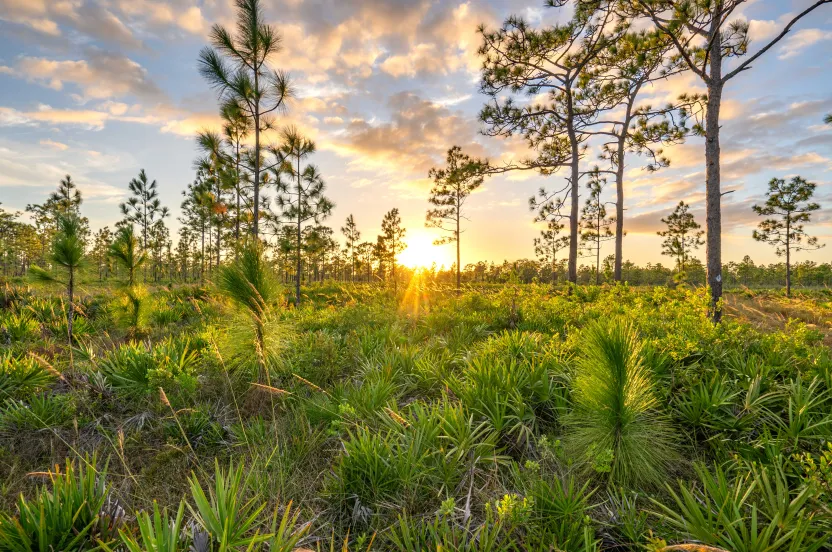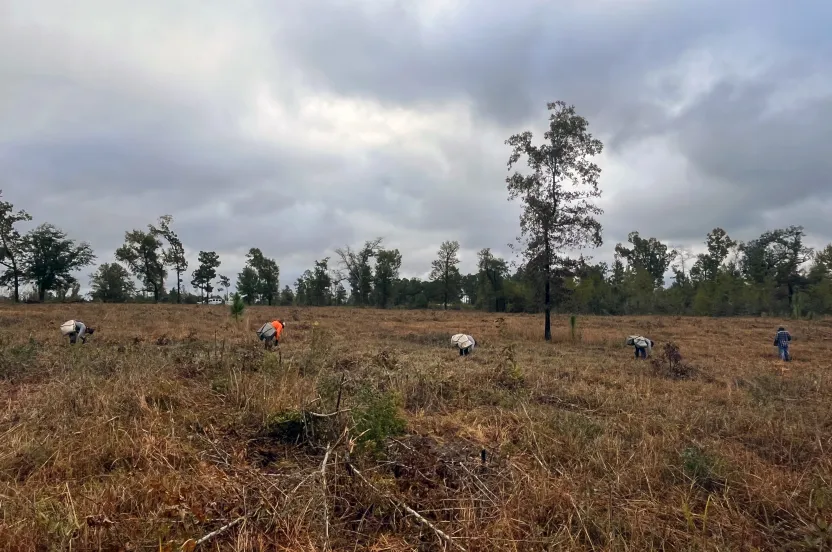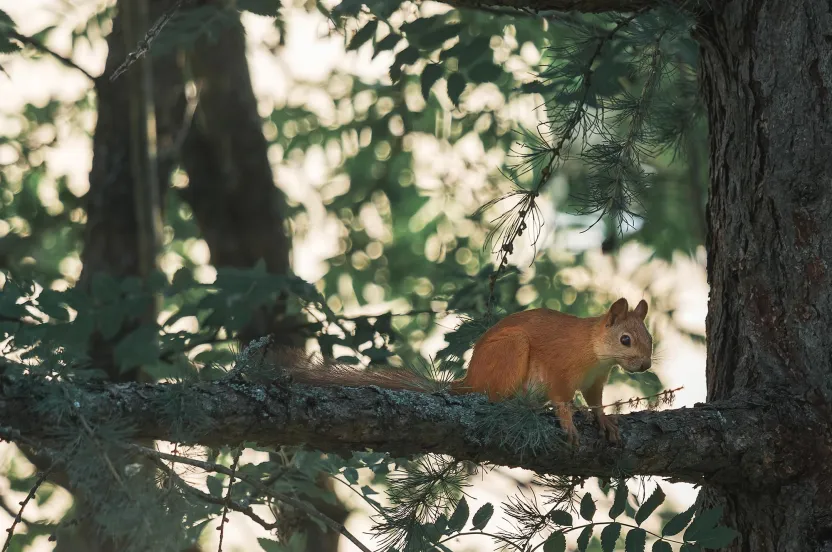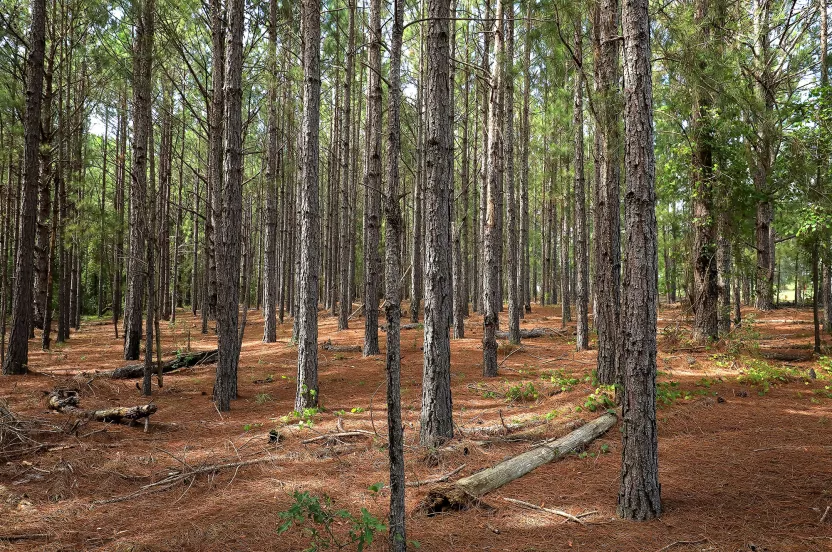Give before midnight on July 31 to double your impact where trees need us most. LEARN MORE
Slow And Steady? Not For This Burrowing Tortoise
Conservationists accelerate the gopher tortoise comeback, helping hundreds of other species along the way.
January 20, 2024

Though it appears to carry its home on its back, the gopher tortoise spends most of its time nearly a dozen feet underground.
Nestled deep in burrows beneath the sandhill coastal plains, the gopher tortoise is uplifting the spirits of environmental activists around the country. That’s because in October 2022, the U.S. Fish and Wildlife Service announced the gopher tortoise was no longer an endangered species across most of its range in the American Southeast.
“It’s a huge success story that everyone could kind of rally around,” said Lisa Lord, a conservation programs director for the Longleaf Alliance, an organization dedicated to ensuring a sustainable future for longleaf pine ecosystems.
The population rebound is—in part—reflective of an immense and collaborative effort from conservationists. That includes the commitment from the Gopher Tortoise Conservation Initiative to purchase and protect 100,000 acres of gopher tortoise habitat.
The urgency to protect the gopher tortoise is not misplaced, because this is not an ordinary reptile.
Finding Friends Amid the Flames
Aptly named, the gopher tortoise is renowned for its ability to dig. On average, the tortoise’s burrows can extend up to 10 feet deep and stretch 30 feet long. Jason Alstad, a land stewardship coordinator for the Georgia Conservancy said the cool, dark den is enjoyed by the gopher tortoise and its many friends.
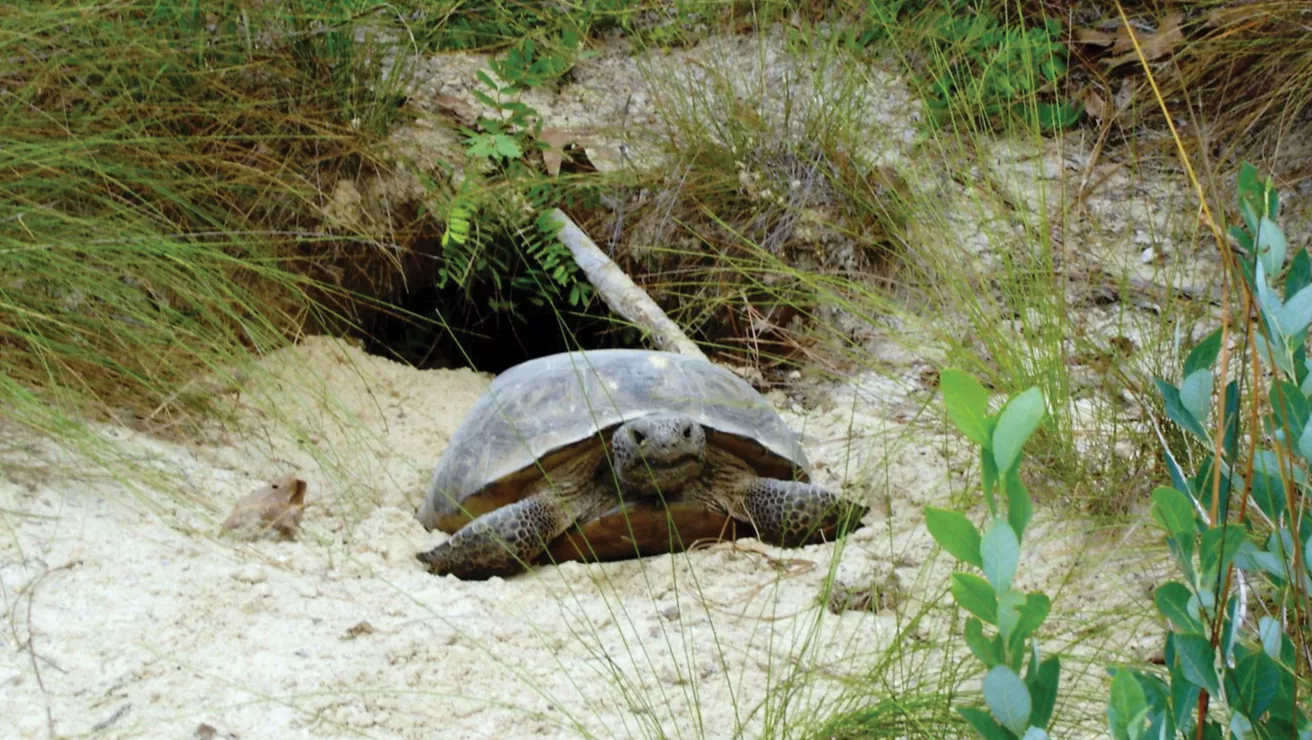
Photo credit: Randy Tate
“You find everything from rattlesnakes to crickets, just about anything you could imagine is trying to get out of the summer heat, taking refuge in there,” Alstad said.
More than 350 different animal and insect species are dependent on the underground tunnels the gopher tortoise hollows out. As an herbivore, the tortoise is a well-behaved host, uninterested in eating or threatening its visitors. In fact, one could easily believe the tortoise might just enjoy the company.
The gopher tortoise is native to the Longleaf Pine ecosystem, a now-scarce forest type that once dominated the American Southeast. The Arbor Day Foundation is engaged in multiple reforestation projects to revive the presence of longleaf pine and, by extension, the presence of the gopher tortoise. It’s a relief to the hundreds of other wildlife species that rely on the tortoise’s burrows to escape not only the heat but fires as well.
In a longleaf pine forest, fire is perceived not as a cause for concern, but as an essential tool to cleanse the ecosystem. However, much of the longleaf pine ecosystem—and the gopher tortoise range—is on private lands, leaving the decision to use prescribed burns to landowners. Alstad admits sometimes it can be difficult to convince landowners that setting fire to their land is the right move.
“We’re kind of having a prescribed fire shortage where we’re not having enough landowners manage their habitat with fire,” Alstad said. “These prescribed fires, when done right, do exactly what they’re supposed to do. Just like with anything, it’s an education process. You have to educate the landowners.”
By not utilizing prescribed burns, landowners could potentially short-change the biodiversity of the ecosystem.
“A lot of ground species, forbs and other grasses that a lot of the gopher tortoises rely on to eat are promoted with fire,” Alstad said.
And by limiting the resources the gopher tortoise needs to thrive, landowners could actually be short-changing themselves of the economic benefits the animal can offer.
A Ripple Effect
Many landowners choose to protect threatened species on their property through Safe Harbor Agreements. The incentive program ensures private landowners can manage their land for conservation of the species, without the risk of being penalized by endangered species laws.
“We’re able to demonstrate you can manage longleaf and you can have environmental benefits and this economic benefit simultaneously,” Lord explained.
But the benefits of the gopher tortoise pay off in other ways, too. Because the tortoise is able to house both predators and prey in its burrows, it helps enforce a natural order that keeps the ecosystem in balance. For example, Alstad said eastern diamondback rattlesnakes are frequent tenants in tortoise burrows.
“There’s people out there that think the only good snake is a dead snake,” Alstad said. “In reality, a really large rattlesnake in a gopher tortoise burrow is a sign of a really healthy ecosystem and [the snakes] are keeping a lot of rodents and other species in check that could come and damage your crops and wreak havoc on you from an economic standpoint.”
It’s just one example of how the gopher tortoise helps bind this ecosystem together. When you pull at the threads, when you let the gopher tortoise population falter, the environment around it begins to suffer.
Alstad said that’s why he’s encouraged by the recent rebound in the number of gopher tortoises. He said it’s an indication that the work of environmental activists is having a real impact and that private landowners are committing to their role as stewards and caretakers.
“The fact that these producers are living in harmony with [gopher tortoises], it shows that it can work,” Alstad said. “If you can get enough people on the same page, it’s amazing what kind of conservation benefits can come out of it.”
The American Southeast in Focus
We plant trees around the world, but focus our efforts on key regions where trees can do the most good. In the American Southeast, we’re supporting efforts to restore longleaf pine and other native species at a massive scale. Since most of the land is privately owned, the Arbor Day Foundation is working with landowners and public entities alike to further reforestation efforts.
